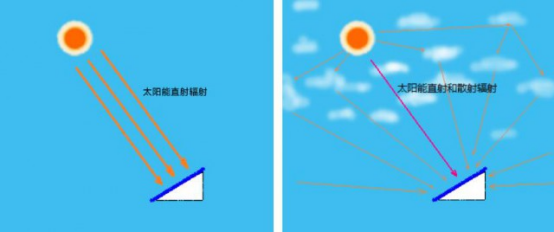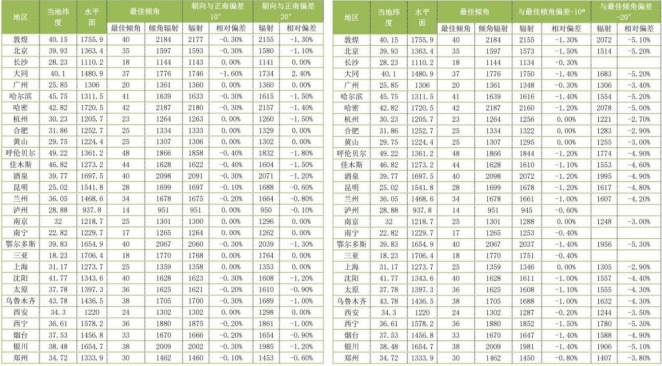May. 05, 2023
As is well known, in order to achieve good power generation effects, photovoltaic building materials should face due south, and the inclination angle should be slightly lower than the local geographical latitude, which is the optimal inclination angle. Only under the optimal orientation and inclination angle can photovoltaic building materials have high-efficiency power generation capability.

However, many rooftops and areas often cannot meet the requirements of the optimal inclination angle.
If we don't consider the influence of the atmosphere on solar radiation, the maximum solar radiation and therefore the maximum power generation capacity can be achieved when the inclination angle of the photovoltaic building materials is equal to the local geographical latitude angle.
If the photovoltaic building materials are equal to the local geographic latitude angle, the maximum solar radiation can be obtained, that is, the maximum power generation.
However, there are significant differences in atmospheric quality between different regions, and a large portion of sunlight is converted into diffuse reflection by water molecules, carbon dioxide, and other gases in the atmosphere. To obtain more direct radiation, the array inclination angle should be designed to match the local latitude angle, while installing the photovoltaic building materials horizontally would result in more scattered radiation.
While it is theoretically possible to achieve maximum power generation capacity for a building, there may be many practical problems or difficulties during installation. Many buildings may not be oriented due south, and the structure of building roofs may not fully meet the requirements for optimal orientation and inclination angle.
In this case, will the photovoltaic power generation system still produce enough electricity as in ideal conditions?

Based on scientific calculation and analysis of the changes in solar radiation received by photovoltaic building materials installed across the country, the results indicate:
1. For most areas in China, a deviation of 10 degrees in the orientation of photovoltaic building materials has an impact of less than 1% on additional power generation, while a deviation of 20 degrees has an impact of less than 2%. This impact is even smaller in areas with lower latitudes.
For example, in Sanya, where the optimal inclination angle is around 18 degrees, if the inclination angle is only 8 degrees, the solar radiation received will only be reduced by about 0.4% compared to the optimal inclination angle. Moreover, if the optimal inclination angle is maintained, but the orientation is deviated by 10 degrees to the east or west, the difference in solar radiation received is almost negligible.
2. In areas with abundant radiation resources, the impact of the inclination angle on radiation is much greater than in areas with relatively poor radiation resources (where there is a larger proportion of scattered radiation) due to the greater proportion of direct radiation.
For instance, in Jiuquan, where solar radiation resources are relatively good, the optimal inclination angle should be around 40 degrees. If the inclination angle is reduced to 30 degrees, the amount of solar radiation received would decrease by about 1.2% compared to the optimal angle. However, if the optimal inclination angle is maintained and the orientation is deviated by only 10 degrees to the east or west, the decrease in solar radiation received would be only about 0.3%.
3. The inclination angle has a greater impact on radiation in high latitude areas than in low latitude places.
4. It should be noted that although the inclination angle has little impact on the total annual power generation, it has a significant impact on different seasons.
For instance, a negative deviation of the inclination angle will increase power generation in summer but significantly decrease in winter. For rooftop photovoltaic systems mainly used for self-consumption, not only the total annual power generation but also the relationship between power generation and electricity load in each quarter should be fully considered.
The optimization of the inclination angle for photovoltaic building materials is not only a result of scientific calculations but also requires adjustments and modifications based on practical on-site conditions. In particular, it is necessary to take into account various factors such as aesthetics, urban management and planning requirements, as well as adapt to the local geographical location for the installation of photovoltaic building materials.